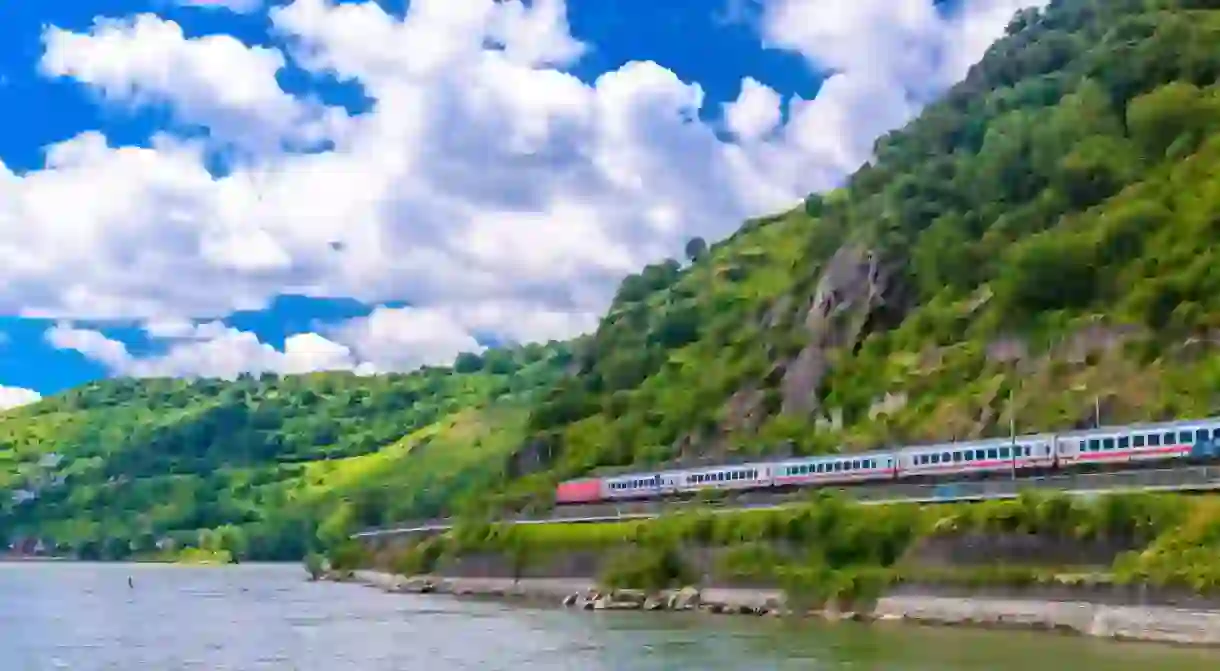The 11 Most Beautiful Villages and Cities in the Rhineland, Germany

At 1230km (764 miles) long, the Rhine River is second only to the Danube for the title of longest river in Europe. As for the most romantic, in Germany, nothing beats the Rhine, inspiration for many an epic poem or novel. There are many adorable towns and villages nestled in the twists and turns of the River as it makes its way from the Swiss Alps to the North Sea. Here are 8 of our favourites in Germany.
Bacharach
Architectural Landmark

If timber-framed houses and beautiful churches are what you’re after, then Bacharach is the perfect place to while away an afternoon. Keep an eye out for Altes Haus, a half-timber house dating from 1368, the 12th-century Stahlek Castle and St Peter’s Church. Climb the Postenturm to get an Instagram-worthy view of the town and then top up your energy reserves with some coffee and cake at one of the many cafés.
Trier
Architectural Landmark

St. Goar
Architectural Landmark
Speyer
Architectural Landmark

Cochem
Market
Koblenz
Architectural Landmark

The third largest city in Rhineland is also an important train hub for the area. If you come from Cologne on the slow train, Koblenz is the start of the prettiest stretch of the journey. The city’s name comes from the Latin for ‘merging of rivers,’ which makes sense, because this is where the Mosel and the Rhine meet. Look out for the ancient castle Schloss Stolsenfels, Wehrtechnische Studiensammlung, a small military museum and the Romanticum, an interactive museum that explains how important the Rhine is in German literature and culture.
Piesport
Architectural Landmark
If you’re at all familiar with Romantic German literature, songs or poetry, you’ll know about Lorelei, a steep slate cliff on whose ramparts many a ship were dashed as they tried to make the near 90 degree bend in the river. Every year Piesport puts on a fireworks display for its Loreleyfest the first weekend in July. Also: wine. The 35 vineyards in the area are collectively known as Piesporter Michelsberg, the best of which is Goldtröpfchen (golden droplets).
Beilstein
Architectural Landmark

10 kilometers (6 miles) south of Cochem, next to the village of Beilstein, you’ll find the ruins of Metternich Castle atop Schlossberg vineyard. The village is known as the Sleeping Beauty of the Rhine, so don’t expect anything to happen at faster than 0km speed. The castle terrace is worth having some cake at because it gives you a chance to take in the stunning Mosel loop panorama.
Mainz
Architectural Landmark
In addition to being the terminus of the Koblenz-Mainz cute Rhine town train journey, Mainz is where the printing press was invented. As such, the city is obsessed with books. Check out how the first books were made at the Gutenberg Museum or try it out yourself at the Druckladen. Dom St Martin and the Landesmuseum Mainz round out the offerings.
Berg Eltz
Architectural Landmark

Technically not a village, but definitely worth a visit. Burg Eltz is probably the best-preserved Medieval castle in all of Germany and is therefore the perfect place to indulge all your knight and damsel fantasies. The castle is unusual in that it’s been in the same family for 33 generations and wasn’t destroyed in the war. Take the train from Cochem to Moselkern and walk though the forest for about an hour to get to the castle, or splurge on a taxi.
Kiedrich
Architectural Landmark
The Gothic village of Kiedrich is in the central Rheingau region between Bingen and Mainz. As you approach the village, you’ll see the tower of Scharfenstein Castle (built in 1215) and the spires of St. Valentine’s Basilica and St. Michael’s Chapel, both from the 15th century. Public tours of the basilica are available immediately after mass. The chapel next door used to be a charnel house, a place where dug up bones from the cemetery were stored. These days, it houses a chandelier sculpted around a life-sized, two-sided Madonna.













